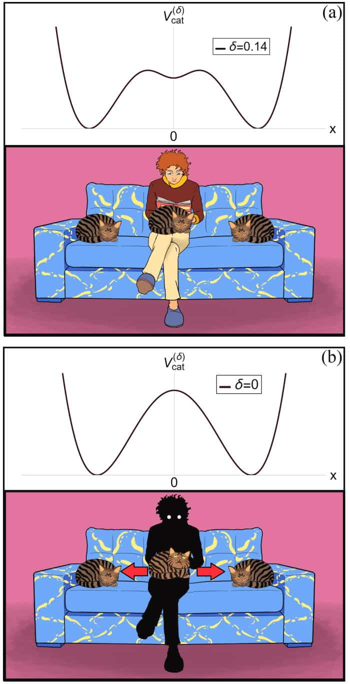A physicist formulated an equation to describe his cat's movement.
Through science, we can not only answer fundamental questions but also describe everyday phenomena. For instance, recent studies have calculated how to properly hold a frisbee disc during a game of golf, determined where it is more comfortable to stand in enclosed smoking areas, and which shape of glass is best suitable for cold beer.
Physicist Anxo Biasi from the Sorbonne University in France formulated an equation describing the movements of cats when a person is nearby. His observations of his cat, Éme, aided him in creating this equation. The results were published in the American Journal of Physics.
Biasi treated the cat as a point particle moving in a potential created by the human. He hypothesized that "cats behave as if they can sense the force surrounding a person."

The researcher analyzed the behavior of his cat Éme and identified seven patterns characteristic of her daily "communication" with her owner, which may also apply to other cats:
- Cats typically rest at some distance from people.
- When cats lie on a person (for example, on their lap, stomach, or back), minimal stimuli like a fly or a barely audible sound can cause them to leave. The intensity of the disturbances required for a cat to start moving depends on their level of attachment to the person they are resting on.
- When people pet cats, they often make back-and-forth oscillatory movements.
- Cats rarely respond when people call them.
- When cats decide to approach a person calling them, they often get distracted along the way and do not reach them.
- At night, cats run back and forth chaotically around the house.
- Cats purr (make a soft vibrating sound) when they enjoy being petted by a person.
The physicist considered that the cat experiences a "force" related to the external potential (caused by the presence of a person). The cat's position at time t relative to the person located at point x = 0 is denoted as x(t), with its value belonging to the set of real numbers. The mass of the cat (m > 0) and the friction coefficient (ϵ > 0), which accounts for the animal's fatigue, were also important for the equation.

According to Biasi, based on the results of his research and the analysis of feline behavior, one can vividly demonstrate how equations are formulated:
“This work entertainingly showcases the thought process involved in constructing physical models, which is rarely described in detail in books. <…> The model of the interaction between the cat and the human brings physics closer to non-specialists, illustrating the logic of constructing physical models through a curious and familiar situation,” the scientist concluded.